Last updated: April 9, 2025
Article
Invasive Exotic Plant Monitoring at Curecanti National Recreation Area
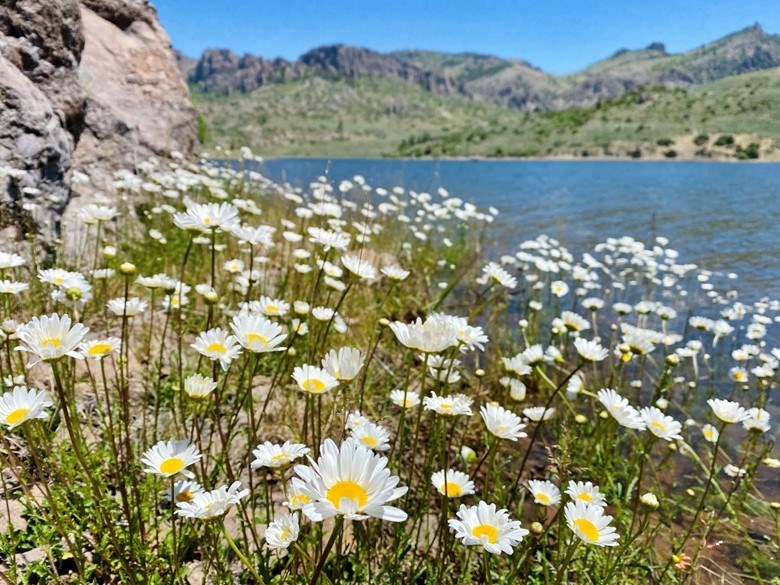
NPS / Amy Washuta
What We Wanted to Know
Invasive exotic plants (IEPs) can rapidly colonize new areas, displacing native species and threatening wildlife, natural landscapes, and recreational opportunities. By filling different ecological roles than the plants they replace, IEPs can disrupt ecosystems and create cascading effects. Early detection is essential, as eradicating small populations is far easier and more cost-effective than managing large infestations.
At Curecanti National Recreation Area (CURE), the Northern Colorado Plateau Network (NCPN) wanted to understand which IEPs are most prevalent, where they are spreading, and how their presence changes over time. Identifying these patterns is essential for prioritizing control efforts and allocating limited resources effectively. By mapping IEP distribution and assessing their impacts on native vegetation, we aimed to pinpoint high-risk areas and species that require immediate attention. This knowledge helps park managers make informed decisions to protect native ecosystems.
What We Did
NCPN monitored IEPs at CURE from June 21 to 27, 2023, by surveying riparian areas and trails. This survey initiated the third monitoring rotation, following previous surveys in 2010–2011 and 2014. Crews established transects every 500 meters along monitoring routes, extending perpendicularly from the edge and alternating sides for narrow areas. Quadrats—1 m² sampling frames—were placed at 0.5, 5, and 10 meters along each transect to quantify vegetation cover and soil features (Figure 1).
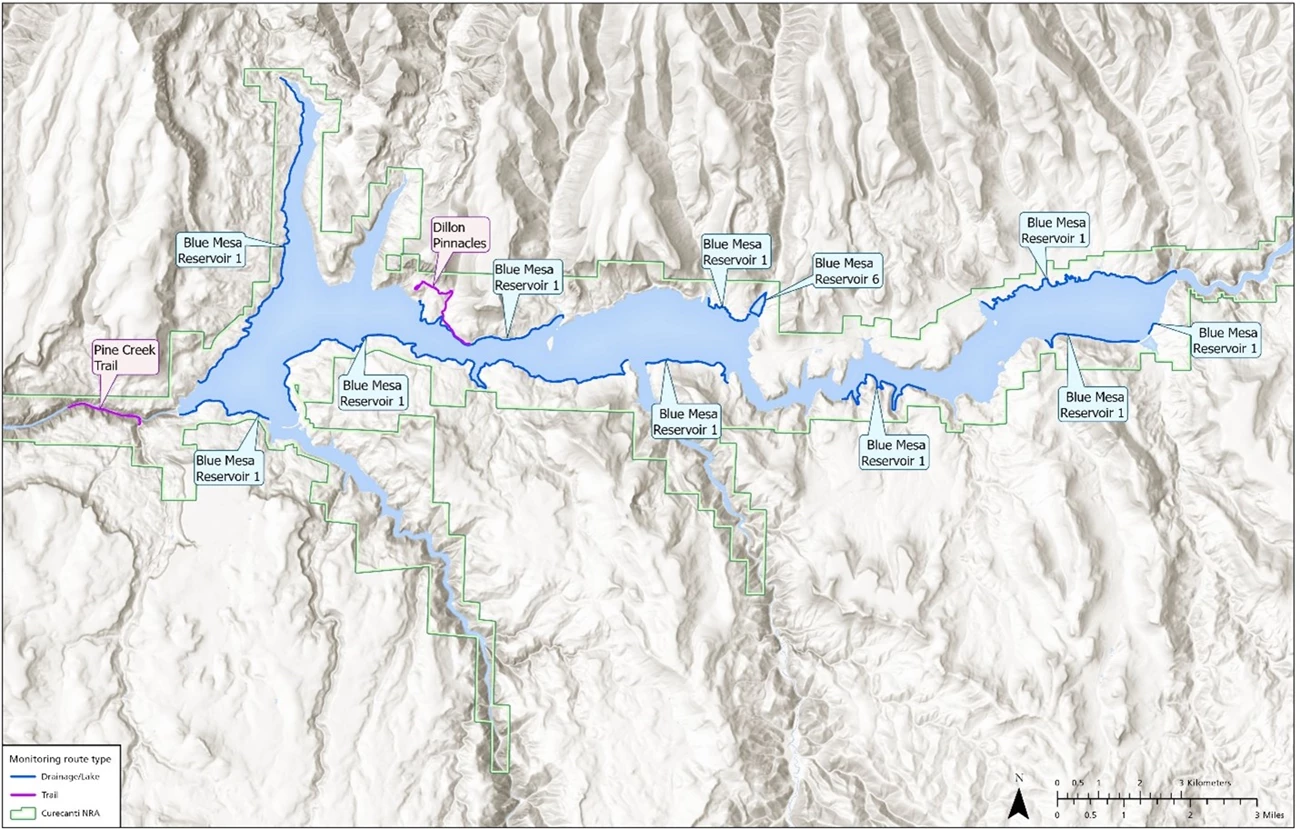
NPS / Aneth Wight
NCPN’s systematic approach focused on priority IEP species. NCPN used detection estimates based on minimum detection target size (MDTS), effective detection distance (EDD), and effective detection swath width (EDSW) (Figure 2).
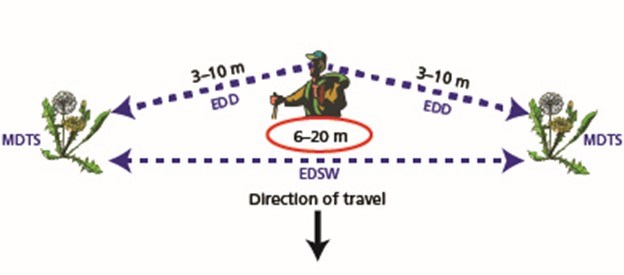
NPS / Alice Wondrak-Biel, Eliot Rendleman
What We Learned
NCPN staff recorded 1,450 patches of 18 priority IEP species along 55.9 kilometers (34.7 miles) of routes at CURE (Table 1). Canada thistle (Breea arvensis), musk thistle (Carduus nutans), woolly mullein (Verbascum thapsus), and Russian thistle (Salsola spp.) were the most widespread species.
Table 1. Species observed and infestation size class detected along all monitoring routes, Curecanti NRA, June 21-27, 2023.
| Species | Common Name | Total Infestations | 1 to Few Plants | Few Plants–40 m² | 40 - 400 m² | 400–1000 m² | >1000 m² |
|---|---|---|---|---|---|---|---|
| Acroptilon repens | Russian knapweed | 19 | 0 | 10 | 7 | 2 | 0 |
| Artemisia absinthium | absinth wormwood | 1 | 0 | 1 | 0 | 0 | 0 |
| Bassia sieversiana | summer-cypress | 60 | 1 | 19 | 24 | 14 | 2 |
| Breea arvensis | Canada thistle | 409 | 3 | 63 | 284 | 59 | 0 |
| Cardaria latifolia | broad leaf pepperwort | 1 | 0 | 0 | 1 | 0 | 0 |
| Cardaria spp. | whitetop | 25 | 3 | 14 | 8 | 0 | 0 |
| Carduus nutans | musk thistle | 359 | 30 | 71 | 229 | 29 | 0 |
| Cirsium vulgare | bull thistle | 10 | 7 | 1 | 1 | 1 | 0 |
| Convolvulus arvensis | field bindweed | 10 | 1 | 3 | 6 | 0 | 0 |
| Leucanthemum vulgare | oxeye daisy | 32 | 3 | 11 | 14 | 4 | 0 |
| Matricaria perforata | scentless chamomile | 17 | 4 | 9 | 4 | 0 | 0 |
| Phalaris arundinacea | reed-canarygrass | 36 | 4 | 9 | 22 | 1 | 0 |
| Potentilla recta | sulfur cinquefoil | 14 | 3 | 9 | 2 | 0 | 0 |
| Rumex crispus | curly dock | 67 | 31 | 24 | 10 | 2 | 0 |
| Salsola sp. | Russian thistle | 131 | 1 | 40 | 78 | 10 | 2 |
| Tamarix sp. | tamarisk | 1 | 1 | 0 | 0 | 0 | 0 |
| Ulmus pumila | Siberian elm | 3 | 1 | 2 | 0 | 0 | 0 |
| Verbascum thapsus | woolly mullein | 255 | 29 | 60 | 140 | 26 | 0 |
| Priority Species | - | 1,450 | 122 | 346 | 830 | 148 | 4 |
Infestations were higher along reservoir routes, with Blue Mesa Reservoir 1 and Blue Mesa Reservoir 6 showing the higher infestations per kilometer than the trails monitored in this sample year. Canada thistle and musk thistle were the most widespread species. The reservoir routes also had higher percent cover (1.41%) compared to the same routes in 2014 (Figure 3), with increases driven by Canada thistle, musk thistle, Russian thistle, and woolly mullein. Infestation rates declined on the Dillon Pinnacles and Pine Creek trails when compared to the previous sampling periods.
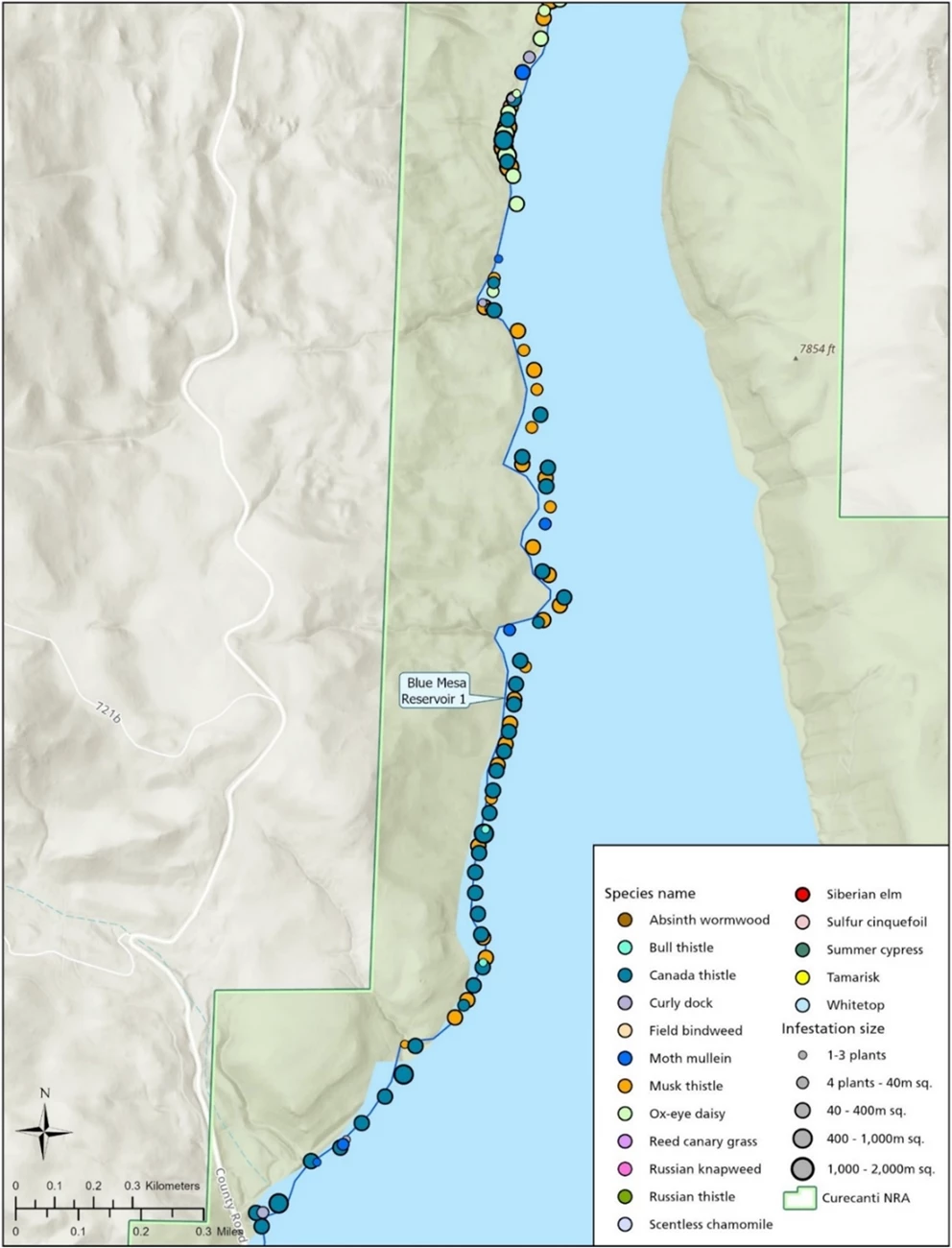
NPS / Aneth Wight
The fluctuating water levels of Blue Mesa Reservoir likely influence species distribution and density, with some patches drowned by rising water during the field season (Figure 4). The 2023 survey highlights ongoing management challenges posed by reservoir conditions and the persistence of priority IEP species.
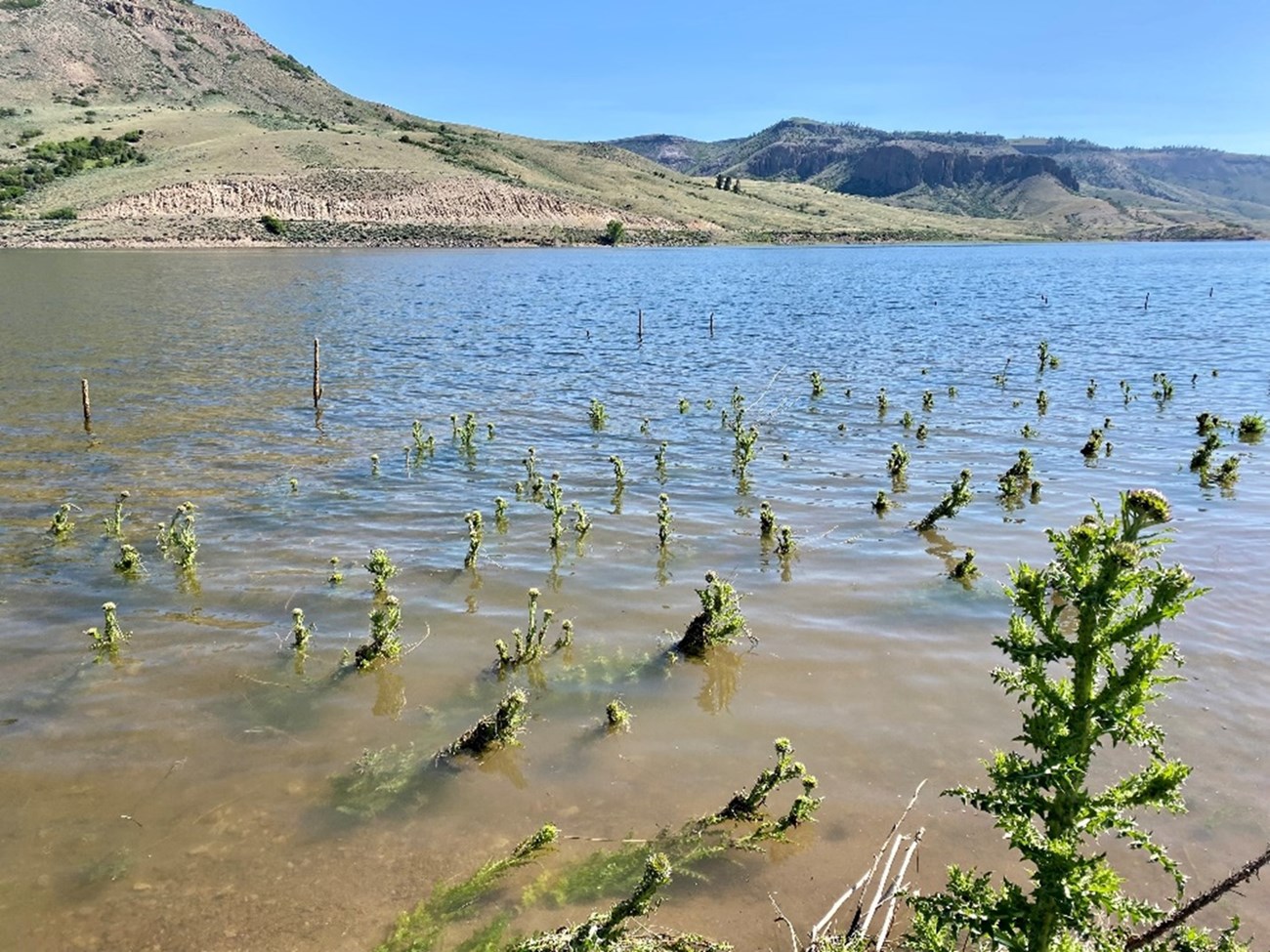
NPS / Amy Washuta
Park managers can use the findings of this study to enhance detection, management, and prevention of IEP species at Curecanti National Recreation Area.
Information in this article was summarized from Perkins D. W. 2025. Invasive exotic plant monitoring at Curecanti National Recreation Area: 2023 field season. Science Report. NPS/SR—2025/262. National Park Service. Fort Collins, Colorado.
